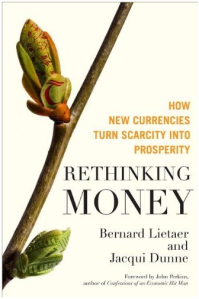
Image is 1920 Briggs and Stratton Motor Wheel Source: Simeone Museum
Today, March 8, 2020 a story on batteries caught our eye.
BOTTOM LINE: Briggs & Stratton has another unstated reason to be doing what it is doing, other than what this “news report” says.
A Milwuakee Business Journal headline read:
Briggs & Stratton’s simplified portfolio highlights growing power application segments
The written story was a bit scattered and difficult to understand, but it was clear that B&S was going to focus more on battery-type products and the commercial, instead of the residential, market. They wrote:
The mix currently is about 80% residential and 20% commercial, but (Chief Financial Officer Mark Schwertfeger) said in the upcoming years, the strategic alignment will bring the numbers closer to 60% residential and 40% commercial.
Given the style and layout of the article, we can guess this was a press release that was lightly modified. But the message was clear, it was a major realignment in product categories. Given the legacy of B & S and it’s reputation in the residential market, it is no small move.
Four (4) additional things caught our eye
1. CEO Todd Teske said exiting the lawn and garden mass markets products business would allow for Briggs & Stratton
2. “I can tell you that what we see in terms of the demand for our Vanguard engines and the demand we see for standby and batteries is significant,” president and CEO Todd Teske said in a company conference call.
3. Factors that resulted in the focus on power application and divestiture within the products sector, Teske said, included the bankruptcy of Sears, a sluggish housing market and what the CEO described as a “do it for me” homeowner mentality.
4. The following brands are included in the company’s product segment: Briggs & Stratton, Simplicity, Snapper, Snapper Pro, Ferris, Allmand, Billy Goat, Murray, Branco, Victa, Craftsman, GE and Troy-Bilt.
So with the CoronaVirus expected to be around for the next few years, we looked for obvious dependence on China manufacturing. We discounted any reliance **on engine parts** when we found this information on their website.
Briggs & Stratton began manufacturing in Milwaukee, WI, in 1908 and today more than 85 percent of Briggs & Stratton engines are made stateside at plants in Alabama, Kentucky, Georgia and Missouri using U.S. and global parts.
Jul 3, 2015
So their might be a parts reliance from China, but likely it could be overcome.
So we focus on publicly available data sources on the phrase lawn and garden mass markets products and we found a general Commercial market study dated, Feb-2017, entitled
Power Lawn & Garden Equipment Market in the US by Product, Power Source, Market and Region, 12th Edition
The following bullet points under “Key Findings” give us what we need:
- Improving Battery Technology Spurs Gains
- Golf Course Closures Hamper Demand
- Aging Homeowner Demographic Bolsters Sales of High Value Products
We assess these data points and found two of three to be false, and did not review the third claim.
On Battery Technology, FALSE. While battery technology has been improving, the bulk of the changes came from battery formulation, not different technologies – such as Lithium-Air batteries or Solid-State batteries, both at least 5 to 10 years ago.
On Golf Course Closures, the total number of golf courses has gone up and down over the last 10 years. So, Closures are NOT hampering demand.
This March of 2015 story from ESPN states:
The study — titled “Golf Around The World” — said there are 34,011 golf courses in the world, 45 percent of which are in the United States.
The current total of 15,372 courses in the U.S. is down from a peak of 16,052 following a “gradual, but steady, market correction,” the report said.
This story from June of 2019 from Golf Monthly in the UK shows an increase
Number of golf courses in the world – 38,864
USA – 16,752
The study revealed that 78% of the world’s supply of golf courses are located in just 10 countries: the United States, Japan, Canada, England, Australia, Germany, France, Republic of Korea, Sweden and Scotland.
BOTTOM LINE: B & S has another unstated reason to be doing what it is doing.
SOURCES
Briggs & Stratton’s simplified portfolio highlights growing power application segments
https://www.bizjournals.com/milwaukee/news/2020/03/07/briggs-strattons-simplified-portfolio-highlights.html
Mar 7, 2020
Power Lawn & Garden Equipment Market in the US by Product, Power Source, Market and Region, 12th Edition
https://www.freedoniagroup.com/industry-study/power-lawn-garden-equipment-market-in-the-us-by-product-power-source-market-and-region-12th-edition-3501.htm
Feb 2017
Lithium–air battery
https://en.wikipedia.org/wiki/Lithium%E2%80%93air_battery#History
Solid-state battery
https://en.wikipedia.org/wiki/Solid-state_battery#History
Number of U.S. golf courses in steady decline
https://www.espn.com/golf/story/_/id/12461331/number-us-golf-courses-steady-decline-says-report
Mar 11, 2015
How Many Golf Courses Are There In The World?
https://www.golf-monthly.co.uk/features/the-game/how-many-golf-courses-are-there-in-the-world-182153
June 25, 2019

 Covidtracking.com
Covidtracking.com
 I was doing some background research on a story and found out that WeWork had started WeLive — also a scam. However, people thought it was real and are still running to the idea with money.
I was doing some background research on a story and found out that WeWork had started WeLive — also a scam. However, people thought it was real and are still running to the idea with money.
